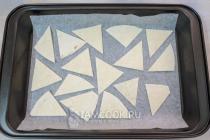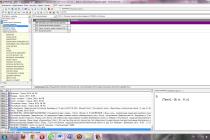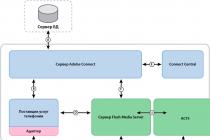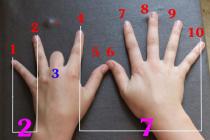It is difficult to imagine a switchboard without modern modular protection devices such as circuit breakers, residual current circuit breakers, differential circuit breakers and all kinds of protection relays. But these modular devices are not always connected correctly and reliably.
In view of the maintenance of electrical panels, I sometimes have to face connection errors circuit breakers that are installed in them. It would seem, how can you incorrectly connect a conventional single-pole circuit breaker? I stripped the cable to a certain length, inserted it into the terminals, and tightened the screws securely.
But as strange as it sounds, most people have "gnarled" hands and the build quality of the shields leaves much to be desired. Although in fact we all make or have made mistakes in this or that industry, and as the well-known proverb says: "He who does nothing is not mistaken."
Greetings to all friends on the site "Electrician in the House". In this article, we will consider and analyze several options for the most common and gross mistakes.
Connecting vending machines in the dashboard - top or bottom entry?
The first thing I would like to start with is the correct connection of the machine in principle. As you know, the circuit breaker has two contacts for connecting movable and fixed. On which of the pins do you need to connect the power to the top or bottom? To date, there have been a lot of controversies on this matter. On any electrotechnical forum, there are a lot of questions and opinions on this matter.
Let's turn to the regulatory documents for advice. What does the PUE say about this? In the 7th edition of the PUE, clause 3.1.6. said:
As you can see in the rules it says that supply wire when connecting machines in the shield should be connected, as a rule, to fixed contacts. This also applies to all ouzo, difavtomats and other protection devices. From this whole clipping, the expression "as a rule" is not clear. That is, it seems, as it should, but in some cases there may be an exception.
To understand where the movable and fixed contact is located, you need to imagine the internal structure of the circuit breaker. Let's look at the example of a single-pole machine where the fixed contact is located.

Before us is an automatic machine of the BA47-29 series from iek. From the photo it is clear that its fixed contact is the upper terminal, and the moving contact is the lower terminal. Considering electrical designations on the switch itself, it is also clear here that the fixed contact is on top.

Circuit breakers from other manufacturers have similar markings on the case. Take, for example, an automatic machine from Schneider Electric Easy9, it also has a fixed contact on top. For Schneider Electric RCDs, everything is similar on top there are fixed contacts, and on the bottom there are movable ones.


Another example is protective devices from Hager. On the case of the hager circuit breakers and RCDs, you can also see the designations, from which it is clear that fixed contacts are on top.
Let's see, from the technical point of view, is there a value, how to connect the machine from above or below.
The circuit breaker protects the line against overloads and short circuits. When overcurrents appear, the thermal and electromagnetic release located inside the housing react. From which side the power will be connected from the top or from the bottom to trip the releases, there is absolutely no difference. That is, we can say with confidence that the operation of the machine is not affected by which contact will be supplied with power.
In truth, I must say that manufacturers of modern "branded" modular devices, such as ABB, Hager and others, allow the power supply to be connected to the lower terminals. For this, the machines have special clamps designed for comb tires.
Why, in the PUE, it is advised to connect to fixed contacts (upper)? This rule is approved in order to general order... Any educated electrician knows that when performing work, it is necessary to remove voltage from the equipment on which he will be working. "Climbing" into the flap, a person intuitively assumes presence of a phase on top of the machines... Having disconnected AB in the dashboard, he knows that there is no voltage at the lower terminals and everything that leaves them.
Now let's imagine that the electrician Uncle Vasya performed for you, who connected the phase to the lower contacts AB. Some time has passed (week, month, year) and you need to replace one of the machines (or add a new one). Uncle Petya, an electrician, comes in, turns off the necessary machines and confidently climbs under tension with his bare hands.
In the recent Soviet past, all machines had a fixed contact at the top (for example, AP-50). Now, by the design of modular AB, you cannot tell where is the movable, and where is the fixed contact. At AB, which we considered above, the fixed contact was located on top. And where are the guarantees that the fixed contact of the Chinese machines will be located on top.
For those who disagree with me, the question is about filling, why on electrical diagrams the power to the machines is connected to the fixed contacts.
If we take, for example, a conventional RB-type switch, which is installed at every industrial facility, then it will never be connected upside down. The connection of power to switching devices of this kind is supposed only to the top contacts. I turned off the switch and you know that the lower contacts are without voltage.
We connect the wires to the machine - a cable with a monolithic core
How do most users connect the machines in the dashboard? What mistakes can be made while doing this? Let's take a look at the most common errors here.
Error - 1. Contact with insulation.
Everybody knows that before you need to remove the insulation from the connected wires. It would seem that there is nothing complicated here, I stripped the core to the required length, then we insert it into the clamping terminal of the machine and tighten it with a screw, thereby ensuring reliable contact.
But there are cases when people are at a loss why the machine burns out when everything is connected correctly. Or why the power in the apartment periodically disappears when the wiring and filling in the dashboard are completely new.

One of the reasons for the above hitting wire insulation under the contact clip of the circuit breaker. Such a danger in the form of poor contact carries a threat of melting of the insulation, not only of the wire, but also of the machine itself, which can lead to a fire.
To exclude this, you need to follow and check how the wire is tightened in the socket. Correct connection of the circuit breakers in the switchboard should exclude such errors.
Error - 2. You cannot connect several conductors of different cross-sections to one AB terminal.
If the need arose connect several machines standing in the same row from one source (wire) for this purpose, a comb bus is the best fit. But these tires are not always at hand. How to combine several group machines in this case? Any electrician, answering this question, will tell you to make homemade jumpers from the cable cores.


To make such a jumper, use pieces of wire of the same cross-section, or it is better not to break it at all along its entire length. How to do it? Without removing the insulation from the wire, form a jumper of the desired shape and size (according to the number of branches). Then we strip the insulation from the wire at the bend to the desired length, and we get an unbreakable jumper from a single piece of wire.

An example of connecting circuit breakers with jumpers from different cable cross-sections. The first automaton receives a "phase" with a 4 mm2 wire, and other automata already have jumpers with a 2.5 mm2 wire. The photo shows that jumper made of wires of different cross-sections... As a result, poor contact, temperature rise, insulation melting not only on the wires, but also on the machine itself.

For example, let's try to tighten two wires with a cross section of 2.5 mm2 and 1.5 mm2 in the terminal of the circuit breaker. No matter how hard I tried to ensure reliable contact in this case, nothing worked for me. A wire with a cross section of 1.5 mm2 dangled freely.


Another example in the photo is a difavtomat, into the terminal of which two wires of different cross-sections were stuck and tried to tighten the whole thing securely. As a result, the wire with a smaller section dangles and sparks.

Error - 3. Forming the ends of wires and cables.
This point most likely refers not to an error, but to a recommendation. To connect the veins of outgoing wires and cables to the machines, we remove the insulation from them by about 1 cm, insert the bare part into the contact and tighten it with a screw. According to statistics, 80% of electricians are connected this way.


The contact at the junction is reliable, but it can be further improved without wasting time and money. When connected to vending machines solid core cables Make a U-bend at the ends.


This formation of the ends will increase the contact area of the wire with the clamping surface, which means that the contact will be better. P.S. The inner walls of the contact pads AB have special notches. When the screw is tightened, these notches cut into the core, which increases the reliability of the contact.

Connecting stranded wires to the machine
For wiring switchboards, electricians often prefer a flexible wire with a multi-wire conductor of the PV-3 or PuGV type. It is easier and easier to work with it than with a monolithic vein. But there is one peculiarity here.
The main mistake that beginners make in this regard is connecting stranded wire to the machine without termination... If you compress the bare stranded wire as it is, then when tightening the veins are squeezed and break off, and this leads to a loss of section and deterioration of contact.



Experienced "experts" know that it is impossible to tighten the bare stranded wire in the terminal. And for the termination of stranded conductors, you need to use special tips NSHV or NSHVI.

In addition, if there is a need to connect two stranded wires to one terminal of the machine for this you need to use the double tip NShVI-2. With the help of NShVI-2 it is very convenient to form jumpers for connecting several group machines.
Soldering wires under the terminal of the machine - ERROR (error)
Separately, I would like to dwell on this method of terminating wires in the shield as soldering. Human nature is so arranged that people try to save money on everything and do not always want to spend money on all kinds of tips, tools and all kinds of modern small things for installation.
For example, consider the case when Uncle Petya, an electrician from the housing office, conducts the wiring of the electrical panel with a stranded wire (or connects outgoing lines to the apartment). He does not have NSHVI tips. But there is always a good old soldering iron at hand. And the electrician Uncle Petya does not find any other way out how to irradiate the multi-wire conductor, stuffs the whole thing into the contact terminal of the machine and tightens it with a screw from the heart. Why is this dangerous?


When assembling switchboards, DO NOT solder and tin the stranded conductor... The fact is that the tinned compound begins to "float" over time. And in order for such a contact to be reliable, it must be constantly checked and tightened. And as practice shows, this is always forgotten. The soldering begins to overheat, the solder melts, the junction is weakened even more and the contact begins to "burn out". In general, such a connection can cause a FIRE.


Therefore, if a stranded wire is used during installation, then NSHVI tips must be used to terminate it.
Circuit breakers, also known as packers or automatic machines, are switching devices whose task is to supply current to the elements of the power grid, and in case of a malfunction, to automatically de-energize. They are usually mounted in a switchboard and protect the circuit from damage caused by excessive loads, voltage drops, and short circuits. In this material, we will talk about how this equipment is classified, what are the features of its operation and how to correctly connect the machines in the electrical panel.
Classification of circuit breakers
Today these devices are sold in a huge range. They differ among themselves in the following characteristics:
- Main circuit current. It can be variable, permanent, or combined.
- Control method. The equipment can be operated manually or by means of a motor drive.
- Installation method. Devices are plug-in, retractable or stationary.
- Release type. These elements can be electronic, electromagnetic and thermal, as well as semiconductor.

- Body type. It can be modular, cast or open.
- Working current indicator. Its value can be from 1.6 A to 6.3 kA.
Modern machines are distinguished by a complex network protection mechanism. They possess additional features, which include:
- The ability to open the electrical circuit at a distance.
- Presence of signal contact groups.
- Automatic operation of a protective device in the event of a voltage drop to a critical value.
Step-by-step diagram for choosing a circuit breaker in the video:
Packets can be of various standard sizes, and with their help it is possible to protect electrical networks not only in apartments and private houses, but also in large objects. These devices are produced both in Russia and abroad.
In domestic conditions, modular circuit breakers, small and lightweight, are most often used. They got the name "modular" due to their standard width, which is 1 module (1.75 cm).
In order to protect the electrical circuits of buildings, the following types of switches are installed:
- Differential.
- Automatic.
RCDs, as they are abbreviated as residual current devices, prevent electric shock to a person who touches the conductor, and prevent the surrounding objects from igniting in the event of an electricity leak, which can occur if the insulation of cables is damaged.

Circuit breakers protect circuits from short-circuit and allow you to manually turn on and off the power. The most advanced protective device is the differential circuit breaker. It combines the capabilities of a residual current device (RCD) and a conventional circuit breaker. This bag is equipped with built-in protection against excessive electron flow. It is controlled by a differential current.
In single-phase power grids, single-pole and double-pole machines can be installed. The choice of the bag is influenced by the number of wires in the electrical wiring.
Circuit breakers: device and principle of operation
Before considering the procedure for connecting circuit breakers in electrical panel, let's figure out how they are arranged and by what principle they are triggered.
The product includes the following elements:
- Frame.
- Control system.
- Top and bottom terminals.
- Switching device.
- Arc extinguishing chamber.
Fire-resistant plastic is used as material for the body and control system. The switching device has moving contacts, as well as fixed ones.

An arcing chamber is installed on a pair of contacts, which are the pole of the bag. When the contacts are broken under load, an electric arc arises, which is extinguished by the camera. The latter consists of steel plates, isolated from each other and at the same distance. The plates of the chamber contribute to the cooling and extinction of the electric arc, which appears in case of malfunctions. The machines can have one, two or four pairs of contacts.
Have bipolar circuit breakers there are two pairs of contacts: one is movable, the other is fixed.
Such a switch is equipped with a position indicator that makes it easy to find out if the machine is on (red light) or off (green).
The principle of operation of circuit breakers in the video is clear:
Release
To turn off the machine in case of emergency, the device is equipped with a release. There are several types of these mechanisms, which are structurally different from each other and work according to different principles.
Thermal release
Structurally, this element includes a plate pressed from two different metals with an unequal coefficient of nonlinear expansion, which is connected to a circuit under load and is called bimetallic. During operation of the release, the flow of electrons passing through the plate heats it up.

Since the expansion coefficient of the metal is less than that of the plate, it bends towards it. When the current rating exceeds the permissible value, the curved plate, acting on the trigger, turns off the machine. If the ambient temperature is abnormal, the switch is also tripped.
Magnetic release
A release of this type is a coil with an insulated copper winding and a core. Since the load current flows through it, it must be connected to the circuit in series with the contacts. If the load current exceeds the permissible rating, the core will move under the influence magnetic field release and by means of a tripping device will open the contacts of the bag.
Selective circuit breakers with semiconductor release
These devices are equipped with a special panel on which the time of the machine's shutdown is set. They provide a time delay in the event of a short circuit, which makes it possible to turn off the emergency section in the event of an abnormal situation, without interrupting the power supply to the object.
A circuit breaker without a release is called a disconnector.

How to choose a machine?
Before starting the installation of protective circuit breakers, you need to choose them, as well as understand the intricacies of the connection. People who want to know how to wire a circuit breaker are asking various questions. For example, before or after the meter are automatic machines connected in the switchboard? Should an input machine be installed? These and other connection nuances are of interest to users.
The main parameters of the circuit breakers
The characteristics of circuit breakers include:
- Rated current (in Amperes).
- Mains operating voltage (in Volts).
- Maximum short-circuit current.
- Ultimate switching capacity.
- Number of poles.
The limiting switching capacity is characterized by the maximum permissible value at which the circuit breaker is capable of operating. The PCR of household devices can be 4.5, 6 or 10 kA.
When choosing, they are most often guided by such basic indicators as the short-circuit breaking current, as well as the overload current.
The cause of overload is the connection of devices with an excessively high total power to the mains, which leads to an excess of the permissible temperature of the contact connections and cables.

Considering this, it is necessary to install a packet bag in the circuit, the value of the shutdown current of which is not less than the calculated one, and it is better if it slightly exceeds it. To determine the estimated current, you need to summarize the power of the devices that are supposed to be connected to the circuit (for each of them, this indicator is in the passport). The resulting number must be divided by 220 (the standard value of the voltage in a household network). The result obtained will be the value of the overload current. It should also be borne in mind that it should not exceed the current rating that the wire can withstand.
The magnitude of the short-circuit breaking current is the indicator at which the circuit breaker is turned off. The calculation of the short-circuit current is carried out when designing a line according to formulas and reference tables, as well as using special equipment. Based on the obtained value, the type of protection is determined. On small objects and in household networks, type B or C machines are used.
Do-it-yourself installation of a circuit breaker in an electrical panel
First of all, you need to decide on the connection of the power wires, and only after that figure out how to connect the machine to the network. If you do not know whether the supply conductors should be connected to the top or bottom of the bag, refer to requirements of PUE, which are the main guiding document in the conduct of electrical work.

The Rules clearly stipulate that the power cable must be connected to fixed contacts, and this requirement must be met in any circuit for connecting circuit breakers. In any modern device fixed contacts are located at the top.
For installation, you will need control devices and a tool, which includes:
- Assembly knife.
- Screwdrivers (Phillips and slotted).
- Multimeter or indicator screwdriver.
So how do you connect the machine correctly? Consider the installation of circuit breakers in single-phase networks.
Two-phase and three-phase connections are more complicated and should be done by a specialist.
Single pole circuit breaker
Installation is carried out in a network where two cables are used to perform the input: zero (PEN) and phase (L). Such a system exists in old buildings. The supply conductor is connected to the input terminal of the machine, then from the output it passes through the meter, after which it is wired to protective devices of specific groups. The supply zero cable to the PEN is also fed through an electric meter.
The use of one, two and three-pole circuit breakers in the video:
Two-pole circuit breaker
We consider the installation of a protective device in single-phase network, where three conductors are used for input: phase, neutral and grounding cable. The input terminals, marked on the device with numbers 1 and 3, are located at the top of the machine, and the output terminals (2 and 4) are at the bottom.

The supply cable fits into the input terminal 1 and is securely fixed to it. In the same way, the neutral wire is attached to terminal 3. The phase passes through the electricity meter. Power is distributed evenly across the switch groups. From terminal 4, the zero cable is connected to the N bus, passing through the counter and the RCD.
Connecting wires
A passport is attached to any circuit breaker, which describes how to correctly connect the wires to its terminals. The document contains all the necessary information - from the cross-section of the cables and the type of their connection to the length of the stripped part of the conductor.
Stripping the ends of the wires for connection household machines is made with a mounting knife by about 1 cm.You can distinguish the conductors by their color coding:
- The phase cable is white or brown.
- The neutral wire is black, blue or light blue.
- The grounding conductor is green.
After stripping the end of the wire with a knife, insert it into the contact clamp and secure with the fixing screw. The screws are tightened with a screwdriver. After fixing the wire, you need to twitch a little to make sure it is securely fixed. If a flexible wire is used to connect to the bag, then in order to increase the reliability of the connection, special lugs should be used.

In order for the installation of the machines in the switchboard and the connection of cables to them to be performed correctly, you need to remember about common mistakes and avoid them during operation:
- Contact with the insulating layer.
- Too much force when tightening, which can lead to deformation of the case and, as a result, to breakdown of the machine.
Often, several are mounted in a switchboard at once protective devices... To connect them, inexperienced specialists use jumpers.
In principle, this is not a mistake, but nevertheless in this case it is better to use a special tire cut to the required size - the so-called comb. With its help, the wires are connected to the bags in the desired sequence.
Features of connecting the self-supporting insulated wire to the input machine
Self-supporting insulated wire is widely used to transfer electricity to the home network from overhead power lines instead of a regular cable. With all the advantages of this conductor, the connection of the self-supporting insulated wire to the circuit breaker should not be made directly, since during operation the aluminum begins to "float" and the insulation burns out. Ultimately, this leads, at best, to the failure of the machine, and at worst - to a fire. The easiest way to avoid such a nuisance is to connect the self-supporting insulated wire to the machine through a special adapter sleeve.

Such a device provides a transition from aluminum wire to copper. You can buy it in a specialized store.
Step-by-step installation of the machine - in the following video:
Conclusion
In this article, we figured out the question of how to properly connect the circuit breakers in the electrical panel, and also considered the types of these devices and the features of their operation. Using the information provided, you can independently install the package and connect it to home network... Naturally, with this procedure, you must strictly follow the rules of electrical safety, as with any work related to electricity.
The process of installing machines in the electrical panel is quite simple and does not take much time. The only problem is to do everything right, because when connecting wires, many novice electricians make small mistakes that can damage the device in a short period of time. In this article, we will look at how to connect a circuit breaker with our own hands, providing installation rules, basic errors and diagrams.
Typical installation errors
Most often, when, and in particular, connecting the machine, the following mistakes are made:
One more important point, on the topic of which there are many discussions - is it possible to connect the machine in front of the electricity meter, or is it done only after it? The answer is that it is possible, and even necessary, the main thing is to buy a special box, which is sealed by representatives of energy sales. The installation of an introductory machine in front of the electric meter will allow for the safe replacement of the electricity control device both in a private house and in an apartment.
Here, in fact, there are the rules for installing and connecting an electric machine with your own hands. Now let's move on to the main topic of the article.
The main process
So in starting position we have an electrical panel in which the products will be installed, as well as all the wires (input and output to consumers).

Consider the instructions for dummies using the example of connecting a two-pole circuit breaker in the dashboard:
- The first step is to turn off the electricity and check its presence using a multimeter or an indicator screwdriver. we provided readers!
- The machine is installed on a special DIN-rail and latches into place with a latch. You can do without din reiki, but this is less convenient.
- The conductors of water and outgoing conductors are stripped by 8-10 mm.
- In the two upper terminals, you need to connect the input zero and the phase (do not forget about the recommendations indicated above).
- Accordingly, outgoing zero and phase (those that go to electrical appliances, sockets and switches) are fixed in the two lower holes.
- After that, the place must be manually checked for reliability. To do this, you need to carefully take the guide and move it in different directions. If the core remains in place, then the connection is reliable, otherwise, be sure to tighten the screw again.
- After all electrical installation, the robot is energized to the network and the functionality of the product is checked.
That's all the instructions for connecting a circuit breaker in a single-phase circuit. As you can see, there is nothing complicated, you just need to be careful. We also recommend that you read the video tutorial, in which the connection process is discussed in more detail:
Visual video instruction
Installation of a low-quality single-pole circuit breaker
Connection diagrams


The video describes in more detail the connection diagrams of a single-pole, two-pole, three-pole and four-pole automatic machine:
Schematic overview
Modern circuit breakers are very reliable in operation and have a number of advantages over other devices designed to protect electrical circuits.
They are devices with two contacts and a switch-off mechanism in a dielectric housing. It is an irreplaceable element of an electrical panel.
There are several parameters that you need to pay attention to when choosing:
Installation and connection in a switchboard
At the installation stage, it is assumed that the case is already assembled and installed, and is wound inside. This is followed by the stage of devices according to the previously developed connection diagram.
The connection of the differential circuit breakers in the switchboard is carried out according to the following scheme:

The following diagram shows how to connect the machines in the switchboard:

At this stage, it is necessary to install two buses - for grounding and a neutral wire, an input machine, and the required amount. All installation operations must be carried out only with the power supply turned off.
To start, it is necessary to install DIN rails inside the shield, they need to be screwed on with self-tapping screws using the perforation of the metal profile. DIN rails are metal strips designed for fixing devices and busbars.
The circuit breakers, RCDs and grounding bars are equipped with spring latches for mounting on a rail. After installation, they allow the devices to be moved freely along the rail.
On the rail, you need to install a zero (in the upper part of the shield) and a ground bus (in the lower part). They are plastic-backed copper plates with conductor clamps. Only one conductor can be connected to each terminal.
After that, it is necessary to install an input switch that will power the entire electrical panel. His should be installed in the left upper corner corps, the lead-in cable should be located as close as possible. To connect a two-pole input circuit breaker in the switchboard, you need to connect, for a single-pole one - only a phase.
Then you need to start installing automatic devices for controlling the power supply of individual rooms and large consumers of electricity. Automatic machines are installed on a DIN rail, they are connected to the main wiring, brought into the shield.
Power is connected to the top terminal. The lower terminals are used to connect the phase conductors of the power supply of the groups according to the developed diagram. To connect the devices to each other, use comb-type busbars.
Everything neutral wires are connected to the zero bus, except for those that are connected using an RCD. has the same connection as the circuit breaker.
The ground is connected to the ground bus with a yellow-green wire. Metal case and the switchboard door must also be connected to it. After that, you can apply voltage to the electrical panel and check its performance with the help of tension.
Useful video on how to install an electrical panel in an apartment:
To avoid mistakes
Points to pay attention to when installing machines in an electrical panel with your own hands:

To independently select and install circuit breakers in an electrical panel, you need to perform a simple sequence of actions. The main thing in this process is this is the observance of security measures, as well as all the requirements of GOST and PUE.
How to carry out a competent installation of an electrical panel and automatic machines with your own hands, you can find out by watching this video:
Automatic switches (in everyday life, abbreviated as "automatic machines") are a type of switching and control equipment that performs three functions: turning on and off electrical equipment (task conventional switch); disconnection of operating equipment from the network during a sudden and sharp increase in current occurring in electrical network during a short circuit; shutdown of the operating equipment at a time that is safe for its operation when overload currents appear in the network and abnormal voltage drops in the network that appear during the connection of powerful electrical appliances and electric motors.
The first type of circuit-breakers, which have a housing with ventilation holes, are used in normal environments with reduced dust and moisture. The cast body of the second provides protection for more high level, which allows the use of switches in extreme conditions.
Modular is a dimensionally standardized air option.
The dimensions of the modular switch are multiples of 17.5 mm across the width of the case. Due to the versatility and ease of installation, modular machines are widely used in the power supply of residential premises.
How to connect the machine correctly - we do everything in order
 In houses built 25-30 years ago, a power supply system was used, in which the "zero" protective conductor was simultaneously a "zero" worker. In modern housing, the functions of protection and working wiring are separate. European plugs make the process of choosing machines depending on the type of power supply system.
In houses built 25-30 years ago, a power supply system was used, in which the "zero" protective conductor was simultaneously a "zero" worker. In modern housing, the functions of protection and working wiring are separate. European plugs make the process of choosing machines depending on the type of power supply system.
The circuit breakers can be mounted on a standard DIN rail or on a panel, and enclosures are available for both. For the first method, a fixing bracket and a latch are provided on the modular AB. For the second on the air circuit breaker case, there are mounting holes - sockets for fastening to bolts.
The modular switch is attached with one hand push: hooked - pressed - the latch was locked.
For air in the panel, you need to drill holes for the bolts. Fasteners must be equipped with rubber gaskets and sealing washers. For high-power air switches, rubber gaskets can be made from plastic.
 One of the options for using multi-tariff metering devices is installation. They allow you to control the costs of consumed electricity and, therefore, save on utility bills.
One of the options for using multi-tariff metering devices is installation. They allow you to control the costs of consumed electricity and, therefore, save on utility bills.
In the cabinet, the circuit breakers are connected according to the "hierarchy". Cable from external source is wound up in the top, wires are bred throughout the territory through the lower outlet holes.

If all loads are evenly distributed, then the function of protection against unexpected power imbalances will fall to neutral.
It is recommended to use quality materials for the correct connection of the circuit breaker. All wire connections must be carefully tightened in the terminals. When connecting several cables, their contacts must be stripped and tinned. For a better connection, sealing and insulation (plastic tips) is recommended. Don't skimp on the cost of machines and insulation.
A video with some nuances to consider when installing AB














